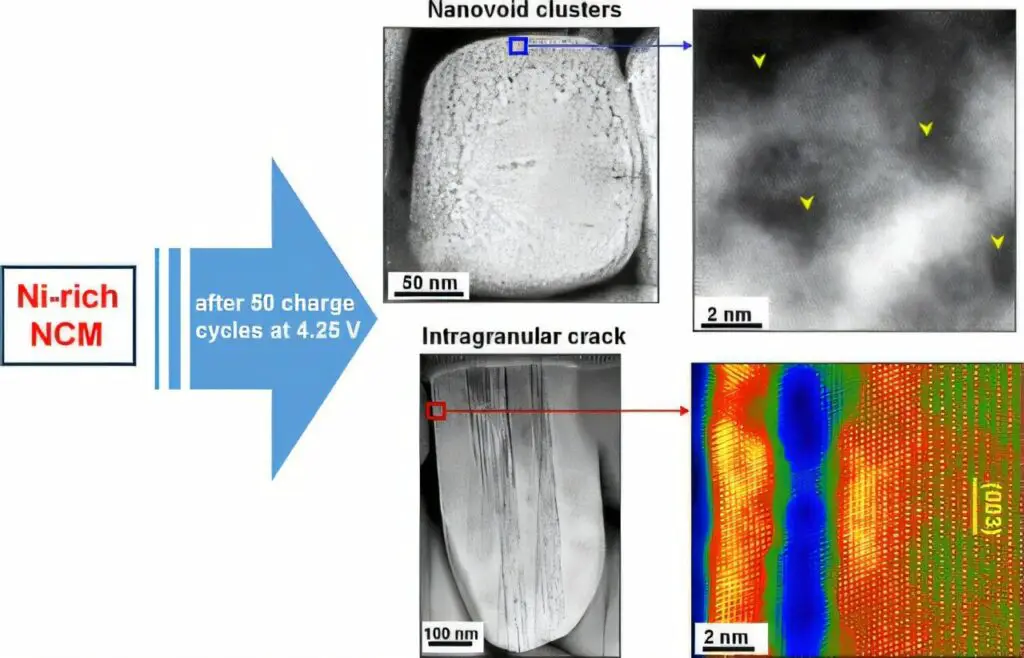A research team has advanced cathode materials, a key component of electric vehicle batteries. Their findings could usher in a new chapter in the development of high-capacity high-safety lithium-ion battery materials. Their paper is published in the journal ACS Nano.
Cathode materials are a key component of lithium-ion batteries and are thus important determinants of major battery performance metrics, including capacity, lifetime, power output characteristics, and stability, as well as the storage of lithium ions and the delivery of electrical energy. Nickel cobalt manganese (NCM) cathode materials with higher nickel content are advantageous because they hold more energy than conventional materials and thus can significantly increase the driving range of electric vehicles.
Problematically, these materials’ higher nickel content results in particle cracks and rapid capacity reduction during repeated charging and discharging, and the large volume of concomitant gas emissions undermine safety.
To tackle this problem, the research team analyzed the cause of performance degradation and gas emissions in nickel-rich NCM cathode materials. They used advanced analytical techniques, including transmission electron microscopy and surface analysis, to observe changes inside cathode materials and found that nanoscale pores were formed on the surface at a low initial charging voltage, which led to battery performance degradation.
Moreover, the team demonstrated that the simple method of increasing the initial activation charging voltage, without using traditional complex doping or surface treatment processes, effectively prevented the structural collapse of cathode materials. Their research confirmed that setting a high initial voltage helped to stabilize the structure of cathode materials and prevented nano-cracks leading to performance degradation.
The research team was led by Professor Kyoungsoo Park of the Department of Physics and Chemistry, Daegu Gyeongbuk Institute of Science and Technology (DGIST) in collaboration with Professor Kwangjin Park of Gachon University.
Professor Park said, “This study’s significance lies in its revelation of the cause of performance degradation in nickel-rich cathode materials, which was previously unclear. The research penetrated the atomic level and discovered a new means of easily achieving high capacity and high safety when using cathode materials. These findings will contribute to the development of next-generation lithium-ion batteries, ultimately ushering in the era of a 1,000-km [electric vehicle] driving range.”
More information:
Sungmin Na et al, Formation Cycle Control for Enhanced Structural Stability of Ni-Rich LiNixCoyMn1-x-yO2 Cathodes, ACS Nano (2025). DOI: 10.1021/acsnano.4c10476
Citation:
Enhanced cathode materials could expand electric vehicle driving range (2025, February 18)
retrieved 19 February 2025
from https://techxplore.com/news/2025-02-cathode-materials-electric-vehicle-range.html
This document is subject to copyright. Apart from any fair dealing for the purpose of private study or research, no
part may be reproduced without the written permission. The content is provided for information purposes only.

